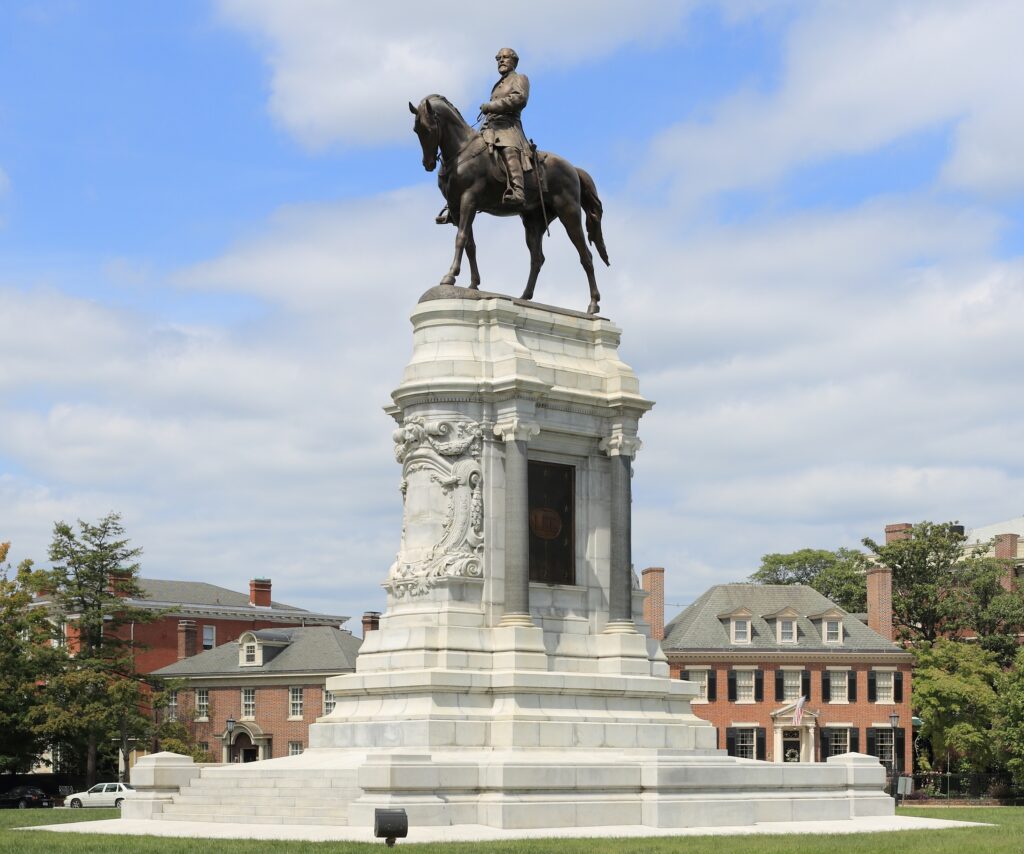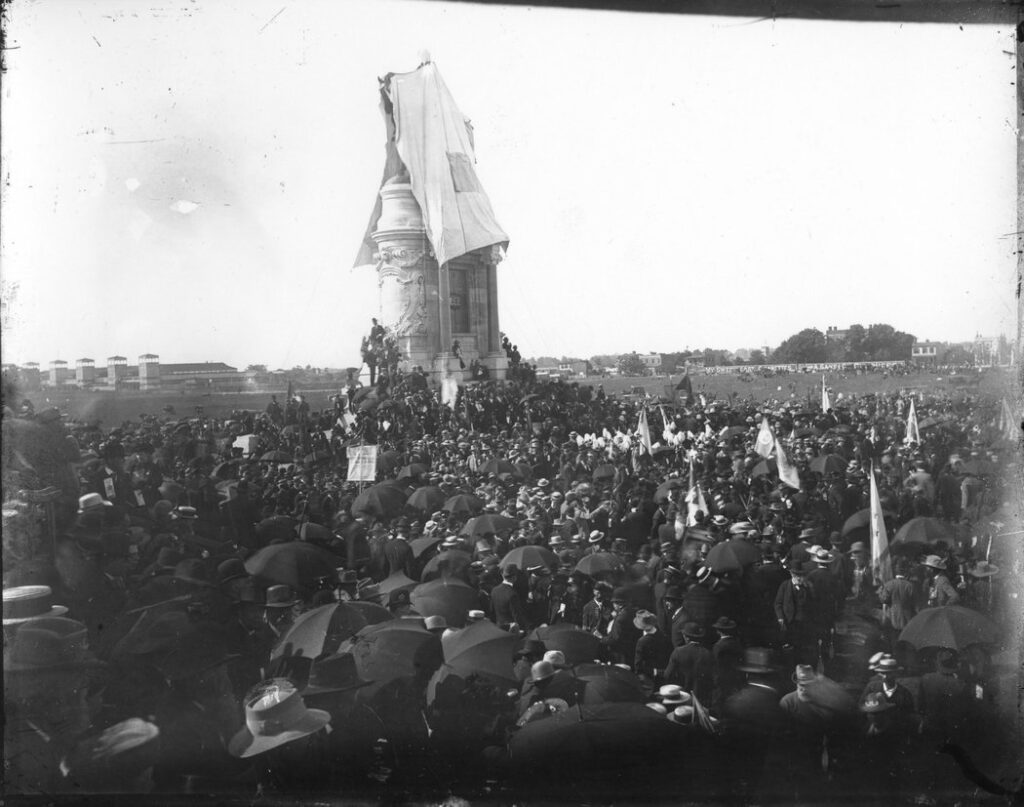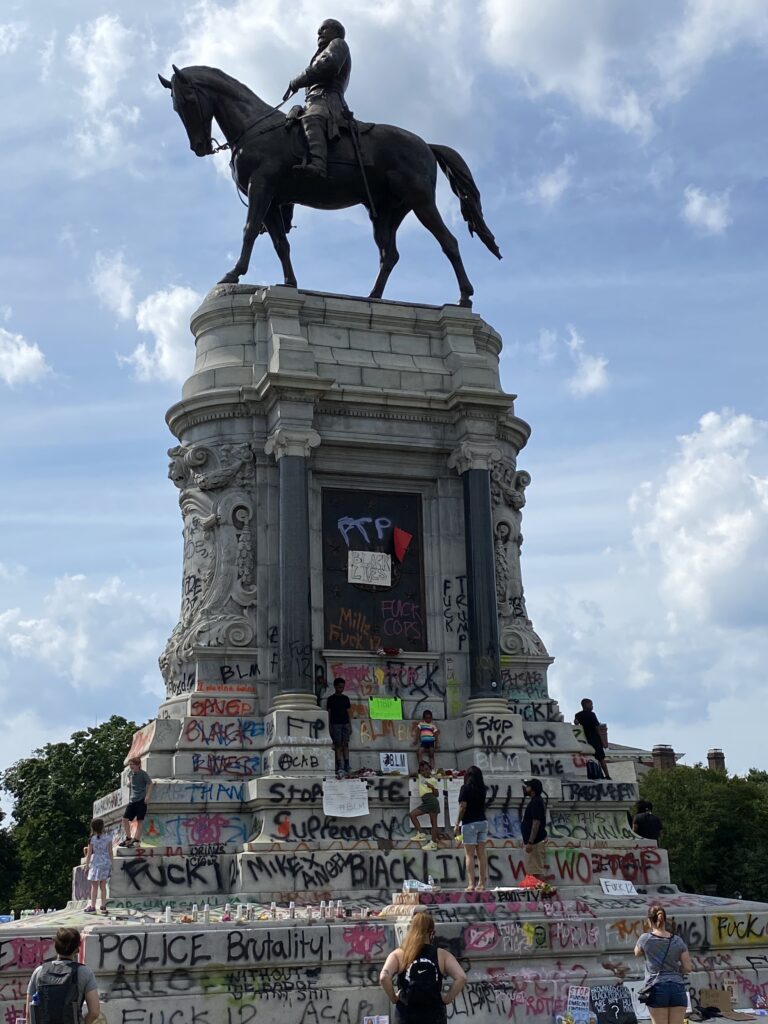
Sculpted in bronze by French artist Antonin Mercie and based on an Aldabert Volck lithograph of Lee on his horse, this is the statue that once stood on Monument Avenue and honored the traitor Robert E. Lee, who deserted his post with the United States Army when Virginia seceded from the Union in April 1861. Lee instead took a Commission in the Confederate Army in defense of the power of states to permit slavery.
Lee, a prominent Virginian, opposed secession but resigned the US Army Commission he earned at West Point to avoid fighting against his home state. He commanded Confederate forces in western Virginia and helped organize coastal defenses in Georgia and South Carolina before taking command of the Army of Northern Virginia in 1862. Lee has been praised as a strong battlefield tactician and commander but in fact proved ineffective at building an effective staff and issuing clear orders. His insistence on offensive operations cost the Confederacy casualties they could not afford to lose. He focused too narrowly on defending Virginia and contributed little to a broader strategy for defending the entire Confederacy and winning the war.
Upon Lee’s death, former Confederate General Jubal Early called for a meeting of former Confederate officers to discuss commemoration of their former commander. These men met in Richmond in early November 1870 and created the Lee Monument Association and the Association of the Army of Northern Virginia. Early tasked members “to manifest to the world, for all time to come, that we were not unworthy to be led by our immortal CHIEF, and that we are not now ashamed of the principles for which Lee fought and Jackson died.” Members began planning monuments to Lee and others, and in 1886 the Lee Monument Association commissioned French sculptor Antonin Mercie to create a statue based on a lithograph of an Aldabert Volck painting.
By 1887 streetcars and crowded neighborhoods had created conditions for expansion of Richmond to its west, and local landowner and developer Otway Allen proposed a site he owned near the end of Franklin Street for a monument to Lee and offered to donate the land to the City. Allen hoped this would form the Western anchor of a plan to construct a “grand avenue” lined with trees extending west from downtown, attract other developers and prospective homeowners, and make his property more valuable. Workers assembled and displayed the finished work in Paris before shipment to Virginia.
Contemporary reports suggest that thousands of volunteers helped move the statue components from port to the site. Dignitaries unveiled the completed statue on 29 May 1890 at the Allen site to the cheers of a hundred thousand Confederate veterans and other Lee worshipers, some carrying battle flags and banners left over from the war.
Officers and men who had served with Lee, as well as other Confederate veterans and the general southern population, developed an affection and strong loyalty for their Commander that helped lead to a growing “Lost Cause” narrative about the defeat of the Confederate project. In this retelling of the history of the war, advocates framed the Southern cause as a noble defense of homeland and state’s rights, which had no hope of success, against an brutal invasion that occurred after the Confederate states legally exercised their sovereignty and dissolved their connections with the Union. This narrative needed heroes, and Lee became an important character in the story, along with Stonewall Jackson and Jefferson Davis. After placement of the Lee monument, statues honoring Jefferson Davis, J. E. B. Stuart, Stonewall Jackson, and Mathew Fontaine Maury were also placed on Monument Avenue. Confederate memorial groups of various types erected additional monuments in more than 239 public spaces in Virginia, more than any other state. Many of these were torn down by protestors or removed by local officials, including all of the statues on Monument Avenue.

Photo from the Valentine Museum’s Cook Collection
In May 2020 the Lee monument became a preferred location for protesting the murder of George Floyd by police officer Derek Chauvin in Minneapolis. Activists painted graffiti on the statue and pedestal, erected displays centered on social justice and racism, and erected signs naming the plaza the Marcus Davis-Peters Circle after a Richmond area middle school teacher killed by a police officer in 2018. By October the scene was considered one of the most influential American protest art works since World War II.

Photo by R. Stanton Scott
Protestors had called for the removal of the statue and a smaller monument to Lee in Charlottesville since the Unite the Right rally in 2017, and on June 4 Governor Ralph Northam announced the removal of the statue from what had become State property. Many Virginians, especially members of the Sons of Confederate Veterans and United Daughters of the Confederacy, opposed removal, calling it a monument to history and heritage rather than racism and slavery. This is not a completely specious argument, thought I doubt that these organizations would support using the monument to teach the history of slavery and the Civil War rather than the Lost Cause narrative.
After a series of lawsuits and a unanimous Virginia Supreme Court decision upholding the Governor’s power to remove the statue, officials took it down. The statue remained in place until September 8, 2021, and ownership was transferred to the Black History Museum and Cultural Center of Virginia in December that year. The Plaza itself has been repurposed into a small park.
